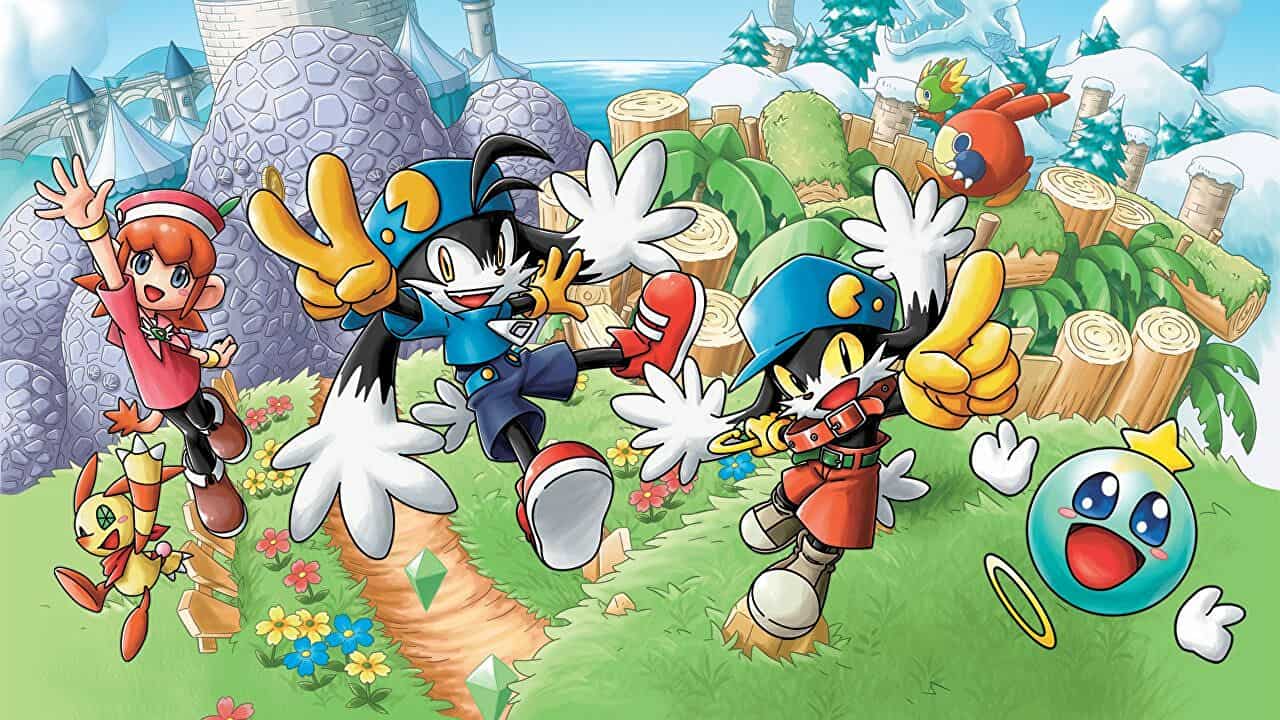Video Gamer is reader-supported. When you buy through links on our site, we may earn an affiliate commission. Prices subject to change. Learn more
The mission of Klonoa Phantasy Reverie Series, a pair of remastered platformers, is to reacquaint us with Klonoa. This sounds like a seedy vegan foodstuff, or a venereal infection, but in fact it refers to a kind of anthropomorphic rabbit. Though, I could have sworn that it let out a meow at one point. At any rate, we have a two-footed creature with flopping ears, chunky red trainers, and a cap adorned with an image of Pac-Man. The publisher is Bandai Namco Entertainment, which sees a crisply conjured digital world not as a fantasy, nor a reverie, but as something equally rich with possibility: advertising space. It’s a risky tactic, pinning an iconic character onto a crummy one; will you boost the fortunes of the rabbit, or munch them, mid-hop, by reminding us of golden days? Either way, with this release and with the upcoming Pac-Man World Re-Pac, next month, Bandai Namco has taken after its most famous hero of late, and started chasing ghosts.
This curious duet comprises Klonoa: Door to Phantomile, which came out on the PlayStation in 1997, and Klonoa 2: Lunatea’s Veil, from 2001, which has, until now, been imprisoned in the tall black tower of the PlayStation 2. The first game was remade, by Japanese developer Paon, in 2008 for the Wii. It is that version that appears here, in more crystalline form, and less likely to cause chronic wrist ache. But, alas, we have lost something. The cutscenes in the original—smooth and softly sculpted, as if C.G.I. could be piped like icing—were a real marvel. The remake is varnished with unlovely in-engine facsimiles, and the veil is lifted.
Elsewhere, Klonoa purists (a rare and cultivated breed, like camellias) may lament the absence of Klonoa: Moonlight Museum, a 1999 prequel for the WonderSwan, in drowsy black-and-white. Now there is a game in need of springing from its hardware. Also missing in action are the Game Boy Advance spin-offs: the platformers, Klonoa: Empire of Dreams (2001) and Klonoa 2: Dream Champ Tournament (2002), and the action-R.P.G., Klonoa Heroes: Densetsu no Star Medal (2002), released only in Japan. One doesn’t wish to appear churlish, but, the fact remains, the word “series” is being applied rather generously here. The producer, Ryo Ishida, hopes to spark a Klonoa revival. “There might be opportunities to further expand the Klonoa IP and do other remasters of other titles as well,” he said, in a recent interview. We can but hope. Otherwise, what chance do we have of playing Klonoa Beach Volleyball, which bounced flatly onto the PlayStation in 2002 and could do with a spike in sales?

So, why should you play this bundle of half-remembered leaps? In a word, hesitance. The first game arrived months after Super Mario 64; and, as Nintendo’s man, encastled in three dimensions, leapt through a collection of rippling portraits and altered the gaming landscape, others had a choice. Either follow, in headstrong fashion, and hope that you have enough ideas to fill the new space—and that the motions of your camera are as clean and cloud-borne as Mario’s. Or, stick to old-fashioned 2-D but dip a toe, and relish the ripples. So it was with Klonoa, who marched from left to right as the world swirled around him.
This strategy was popular among developers who saw the new and shining technology at their disposal not as a directive to throw out the past but as a way to polish it—to pry open those depths that previously lurked only in our heads. Hence the narcoleptic flights of Nights into Dreams, which arrived on the Sega Saturn in 1996, swimming with the newly polygonal but only snorkel-deep. And, as late as 2000, we got Kirby 64: The Crystal Shards, whose developer, HAL Laboratory, had far less appetite than its leading blob for inflation. That game clearly took its notes from Klonoa, with its regular trips into the background and its hero’s knack of holding enemies aloft and hurling them to and fro.
By the time of Lunatea’s Veil, however, you could no longer claim that Namco was merely hanging fast to the bygone. What one presumed to be conservatism or reticence, at the time of Door to Phantomile, was evidently now an obsession. Watch, as our leporine star is fired from canons and curvets through the sky—a whirl of scenery, only for the camera to land securely back on its side-scrolling track. Namco deploys this trick many times, and teases us with background glimpses of other, reachable routes, laminated by our perspective. It is as if 3-D were being used to demonstrate the pleasures of interlocking design. Years before Dark Souls would treat pathways like hanks of rope, to be coiled, tied, and pulled loose; before Fez fished around in our heads and turned level design on its side; and before the limp proliferation of 2.5-D, Klonoa was playing in the space not just between dimensions but between generations of hardware. No wonder it was doomed to be lost in the folds of time.
With the PlayStation 2 at your disposal (and years to go before Xbox Live Arcade would bring vitality and vogue to the pixelated and the 16-bit) to make a 3-D game was the obvious move. Lunatea’s Veil materialised, on these shores, a month before Jak and Daxter: The Precursor Legacy, whose central twosome not only capered in full and birling 3-D but, it must be said, offered a more palatable blur of ears, attitude, and fur. But Namco, bound to a 2-D plane as if by honour, had rooted around in the outmoded and found something rarefied. In so doing, it seemed more leashed than Naughty Dog was to the legacy of its precursors. The truth is, our eminently forgettable hero may tip his hat to history, but these games always peered ahead.

